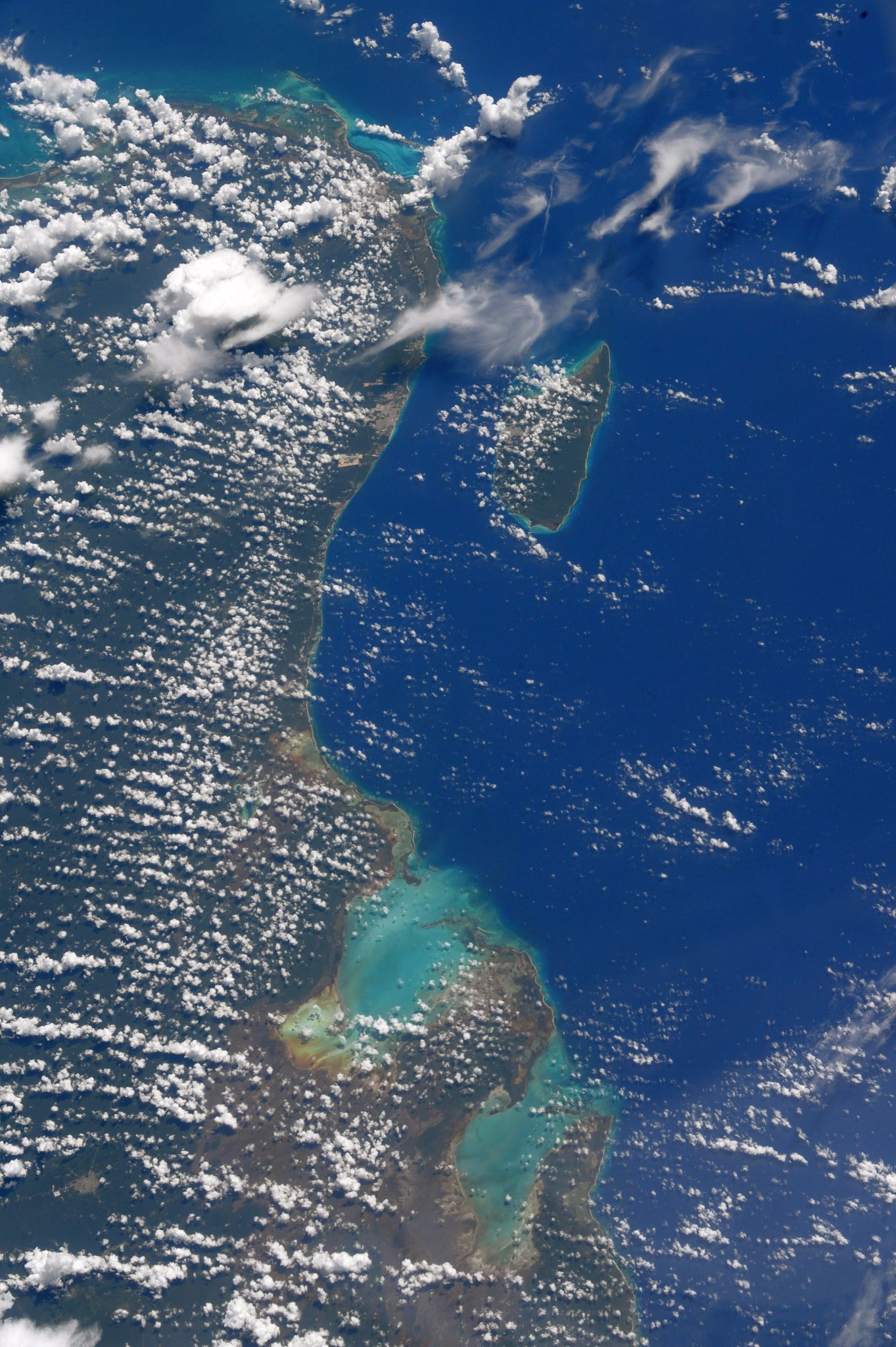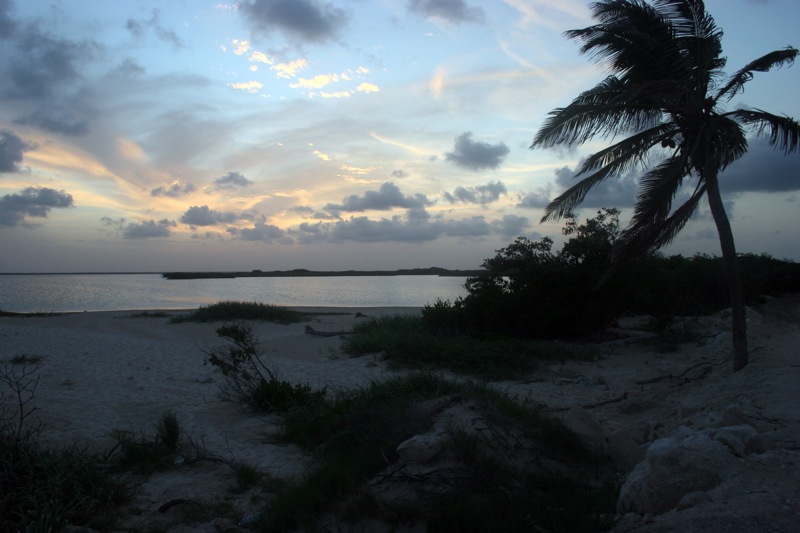[:ja]ランディ・ブレズニク宇宙飛行士がISSから撮影した、マヤ文明の遺跡で有名なユカタン半島の東海岸、1987年にユネスコの世界遺産に登録されたシアン・カアン生物圏保護区付近です。

ユカタン半島は、メキシコ、グアテマラ、ベリーズにまたがり、メキシコ湾とカリブ海との間に突き出ている半島です。石灰岩からなる広大な台地のカルスト地形が発達しており、雨は土に染み込んで地下水脈を流れ、その一部はセノーテとして湧き出しています。地上に川はありません。また、半島北西端の地底深くに、恐竜の絶滅をもたらしたとされる隕石によるチクシュルーブ・クレーターが沈んでいます。
地上の様子はこちらです。

参考文献: Randy Bresnik’s Tweet
ウェブ地球儀で地球俯瞰画像を見る: LiVEARTH
[Earthview Wonders] No.320: Yucatan Peninsula🇲🇽
Astronaut Randy Bresnik captured from ISS the east coast of Yukatan Peninsula near Sian Ka’an Biosphere Reserve. The peninsula is famous for Maya archaeological sites.

The Yucatán Peninsula in southeastern Mexico, separates the Caribbean Sea from the Gulf of Mexico, with the northern coastline on the Yucatán Channel. The peninsula is an unconfined flat lying karst landscape, and the exposed portion of the larger Yucatán Platform which is composed mostly of limestone. The peninsula has no rivers but sinkholes known locally as cenotes, are widespread in the northern lowlands.
Also the Yucatán Peninsula is the site of the Chicxulub crater impact, which was created 66 million years ago by an asteroid which is presumably considered the cause of dinosaur extinction.
The local scenery on the ground looks like this.

Reference: Randy Bresnik’s Tweet
See earthview photo gallery with web-globe: LiVEARTH[:en][Earthview Wonders] No.320: Yucatan Peninsula🇲🇽
Astronaut Randy Bresnik captured from ISS the east coast of Yukatan Peninsula near Sian Ka’an Biosphere Reserve. The peninsula is famous for Maya archaeological sites.

The Yucatán Peninsula in southeastern Mexico, separates the Caribbean Sea from the Gulf of Mexico, with the northern coastline on the Yucatán Channel. The peninsula is an unconfined flat lying karst landscape, and the exposed portion of the larger Yucatán Platform which is composed mostly of limestone. The peninsula has no rivers but sinkholes known locally as cenotes, are widespread in the northern lowlands.
Also the Yucatán Peninsula is the site of the Chicxulub crater impact, which was created 66 million years ago by an asteroid which is presumably considered the cause of dinosaur extinction.
The local scenery on the ground looks like this.

Reference: Randy Bresnik’s Tweet
See earthview photo gallery with web-globe: LiVEARTH[:]